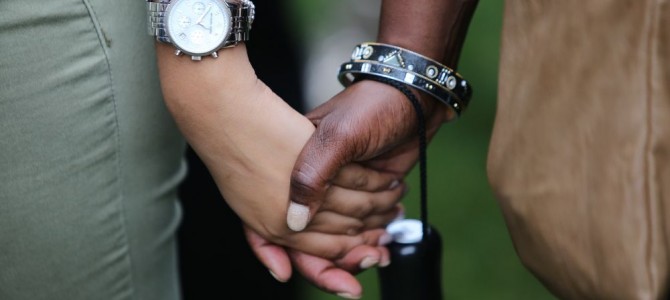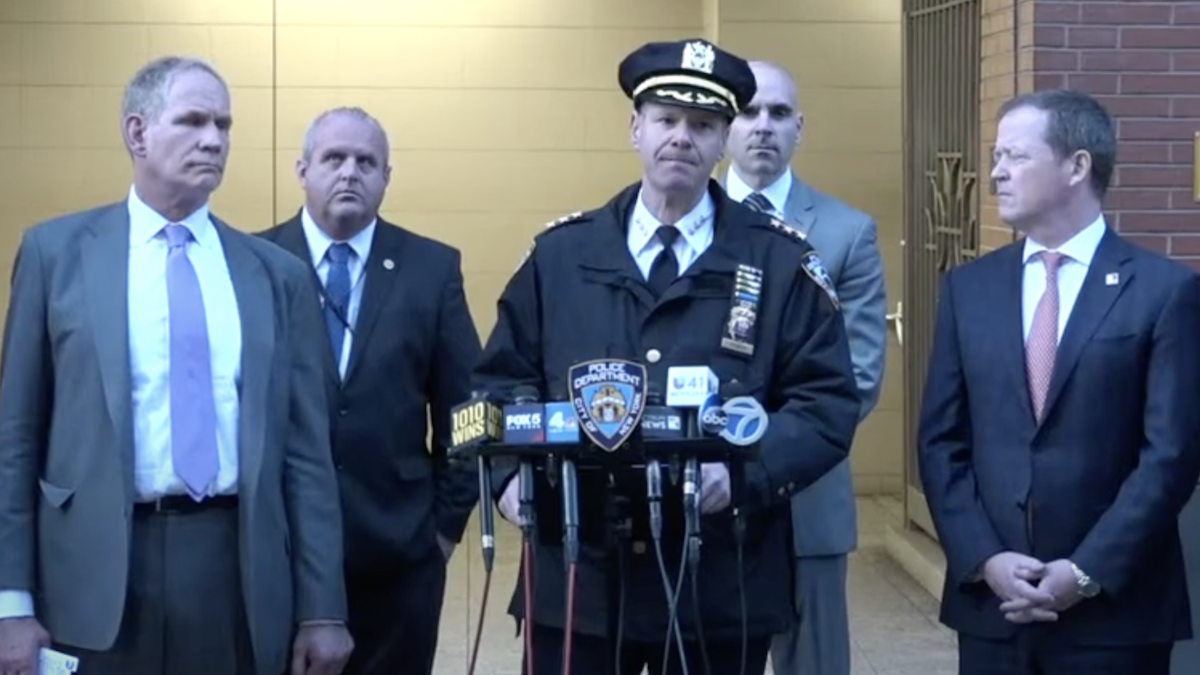
Black lives matter. Blue lives matter. These phrases are fixtures on the news and social media feeds right now as America reels from violence and tense interactions between the public servants sworn to protect people and the communities themselves. Most recently, the Washington Post reports Baltimore police say they shot 23-year-old Korryn Gaines after she brandished a shotgun and shot at them while holding her five-year-old son.
Police should be able to assess the levels of risk present in a situation and react appropriately and fairly, and the public should trust the judgement of law enforcement professionals and not have reasons to fear for their lives at simple traffic stops. Relations have broken down. The public fears the police and the police fear the people.
Threat assessment and management is an evolving field, and has to race to keep up with the changing needs of our instant society. An important goal of policing should be safety, for both the officer and for the community. In an ideal world, officers don’t make mistakes, and citizens don’t commit crimes. That’s not the reality we’re living in, so the goal shifts to minimizing dangerous mistakes and purposeful acts aimed at injuring others.
This is difficult enough in the course of normal policing, but it is even more treacherous when mental illnesses and developmental disabilities enter tense situations, as when a Miami police officer accidentally shot a caregiver for an autistic man, thinking the latter posed a threat because he wouldn’t obey police commands. Police are expected to know, with a zero-sum margin of error, if the non-compliance of the person in front of them is due to criminal intentions or a disability.
The Boundaries of Two-Way Violence
Violent interactions between the police and citizens aren’t rare in the United States. In 2010, police killed or injured 55,400 people. One in 30 injuries for people of any age that led to an emergency room visit or hospital stay were caused by the police. If you fear being shot because of the prevalence of guns, realize that 1 in 13 people killed by a firearm are killed by the police, and 1 in 11 of those police have killed were completely unarmed.
Enforcing the law is difficult, but police are not juries and executioners. Are all of these injuries and deaths justified, the police merely protecting themselves and others, with reasonable force? In the same year, 67,000 police officers were assaulted. Seventy-four percent of people police killed were either in the process of an unarmed attack on an officer, or pointing a gun at, or shooting an officer.
Beyond these numbers are valid concerns about police militarization and aggression. Dallas brought us a drone bomb used to kill a shooter on U.S. soil. Ryan Calo, a professor at the University of Washington School of Law who studies robotics and cyber law, believes this is novel: “As far as I know, this is a first time that they’ve used a robot to intentionally kill someone.” The Pentagon operates a program to supply weapons and vehicles to police and other law enforcement agencies that were previously limited to our military. NPR has reported that nearly 500 robots, capable of carrying bombs like the Dallas one, have been distributed since 2006.
When discussing how much force is acceptable, and when the police can use lethal force, two court cases need to be considered. In 1985, with Tennessee v. Garner, the Supreme Court addressed when lethal force was appropriate to use with a fleeing suspect, hinging on whether the suspect was trying to seriously harm someone. Graham v. Connor, decided by the Supreme Court four years later in 1989, further clarified that the circumstances warranting lethal force by the police need to be carefully examined to prevent misuse, including language from an earlier case about “whether the force was applied in a good-faith effort to maintain and restore discipline or maliciously and sadistically for the very purpose of causing harm.” Discussions about ethics and police force are not new, and the increase in technology opens new avenues for potential misuse of police power.
What the Police Are Saying about Social Chaos
Dallas Police Chief David Brown believes the root of many of these issues is that we expect the police to be too many things: “We’re asking cops to do too much in this country. We are. We just ask of us to do too much. Every societal failure, we put it off on the cops to solve. Not enough mental-health funding. Let the cop handle it. Not enough drug-addiction funding. Let’s give it to the cops. Here in Dallas, we got a loose-dog problem. Let’s have the cops chase loose dogs. Schools fail, give it to the cops. Seventy percent of the African American community is being raised by single women. Let’s give it to the cops to solve that as well. That’s too much to ask. Policing was never meant to solve all those problems, and I just ask for other parts of our democracy, along with the free press, to help us.”
He’s not alone. Talking to officers who are currently serving or have served in settings across the nation, a deep problem becomes clear. Due to regulations on speaking to the press, these law enforcement officers agreed to speak as long as they remain anonymous.
Bob, who worked in corrections, notes that, “The majority of the problems come with people either in serious crisis, or are self-medicating, or are off their meds. At that point all you can really do is wrap them up and bring them to somebody that can help. More often than not it will be the police [rather than the medical community]. There’s something going wrong and the police are called. They’re the first ones there.”
The goal of policing isn’t to have incidents that end up on the news. Rather, “Our credo is basically, ‘Let’s keep it boring.’ An exciting day is rare, and not a good day.”
Frank, a retired homicide detective turned pastor and chaplain, talked about officers’ training for dealing with mental illnesses and developmental concerns like autism: “I think many departments do provide a fair amount of training on that; especially departments accredited by CALEA. But, even with training, it is a challenging thing to deal with for LEOs [law enforcement officers]. Just as most of our culture is trying to get up to speed with autism, so too police departments…Media could be helpful by encouraging a wait and see attitude for all the facts to come regarding some of these very critical incidents. Our social media age makes that difficult with such rapid and highly emotional responses without knowing the totality of the circumstances.”
We Need More Mental Health Resources
Lynn Mittelstadt, a nurse educator who has worked in behavioral community health, has seen this issue from the other side. “Police officers come in contact with people when they are in crisis. And people don’t know who to contact. Police officers should be trained to distinguish between what is a criminal act and what is a mental health crisis. Having a mental health crisis is not a criminal act.”
Like Rod Dreher has noted, she also says people often end up dealing with the police instead of medical professionals, when the latter would often be more appropriate.
“Even with the mental health parity that was passed, coverage on insurance plans can differ between medical care and mental health care,” Mittelstadt said. “Access is scant, there are few mental health providers. The need far exceeds demand. And many people bring up mental health concerns with their pcp [primary care provider], who may not recognize the signs and symptoms of a mental illness. Underserved and rural populations have even less access to care.”
The Affordable Care Act’s expansion of mental health care access and increased talk about mental illness hasn’t changed that it’s still hard to access care. There’s stigma, a lack of options, and misunderstandings about what mental health actually is. Without a grasp of that, police, whose job it is to care for people in crisis, are fighting a losing battle.
Mittelstadt offers advice on dealing with people in crisis: “Really the key is to be willing to listen to what the other person is saying, and to be willing to stay with them during crisis. Just saying, ‘I am here, and I will stay with you, we will do this together. You are not alone.’ Those are powerful words that are backed up with actions.”
No law-abiding person should fear police interactions, and no police officers should fear for their lives just because they’re doing their job. The culture of fear and mistrust makes everyone less safe, less able to access help, and creates an us-versus-them mentality between communities and police.
Police aren’t outsiders, they’re people. When we single out groups as mattering less or more, we forget that we should be standing together, working to improve the safety and lives of us all. This issue will not go away, and there are important and difficult ethical questions that need to be answered sooner rather than later. Our population needs police that protect us, not kill us, and our police need to be able to safely enforce laws. Instead of using police actions to generate income, let them do their actual jobs.
Correction: Due to an editing error, an earlier version of this article did not include the words “or injured” in the sentence about 54,000 injuries or deaths with police in 2010. We regret the error.









